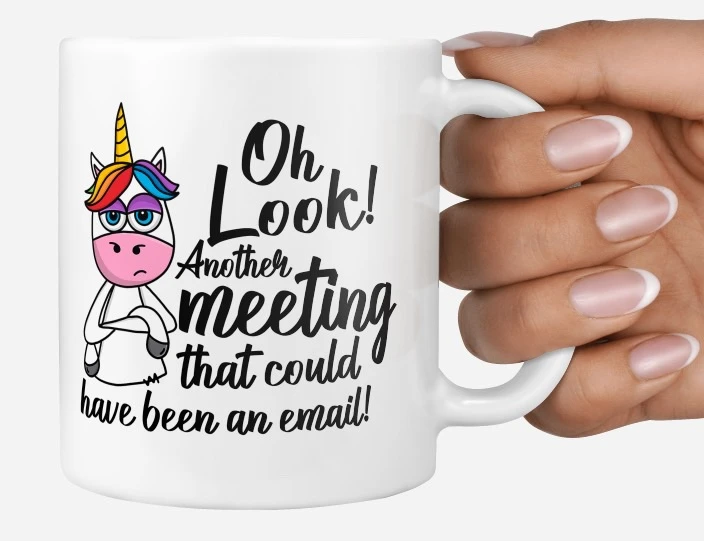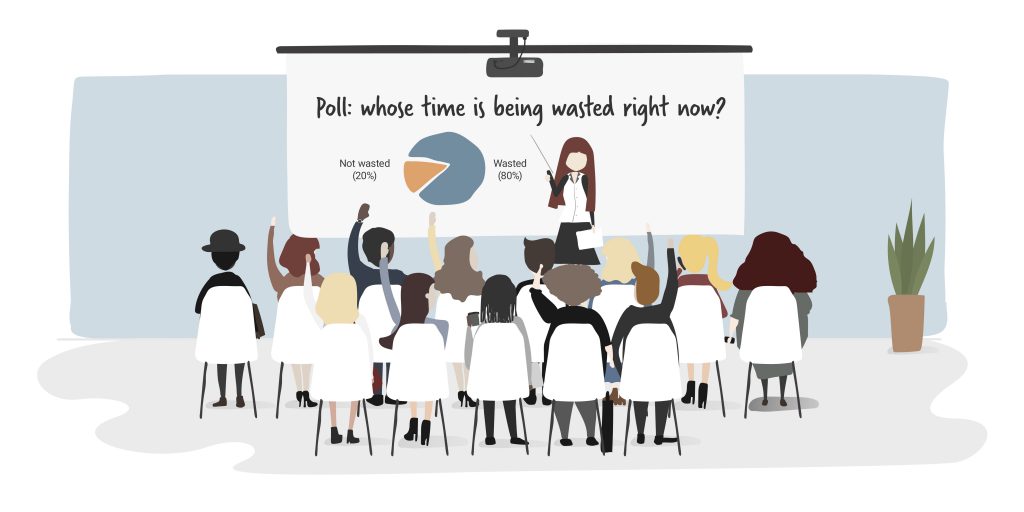
Startups celebrate a culture of working from where you want (although the trade off appears to be in how long you work for). Big corporations, desperate to mimic the gimmick, offer flexible working weeks in a trade off for good Glassdoor rating.
Modern business gurus have been singing the praises of flexible working for some time. It’s hardly new news.
But now the COVID-19 pandemic (def = scale not severity) is pushing flexible working mainstream.
Personal preferences aside (I like working collaboratively, or at least near other people), and focusing very much on the silver lining, this forced experiment must have plenty of people excited. No more long commutes. Be home to see the kids after school (unless it’s cancelled). Feline distractions that aren’t made of pixels. No more stolen lunches.
Or meetings.

Whether or not you buy into the negativity around unproductive interactions in the workplace, it’s undeniable that this will have a huge impact on how we work.
We work very collaboratively. We’re not claiming to be pioneers in the space, though this has been our workflow for my entire time across the business. Not only internally, where we’re lucky to have the open space for large whiteboard areas and productive groupthink, but also with our partners.
Which raises the question of how we’re going to translate our way of working into this enforced age of physical isolation.
The energy and passion captured in a workshop is difficult to ignite when working in tracksuit pants on the couch. The collaborate space of a physical whiteboard will be hard to replicate online. But mashing together various tools from Google’s toolbox (every other modern office suite will have similar options) will hopefully bring us close.
- Hangouts/Meet will put us all “in the room” together. We do not in any way endorse the panopticon, but a video stream helps every sit up a little straighter.
- Jamboard will (hopefully) get the whiteboard mindset moving, and help cut down on the number of trees felled for colourful Post-It notes.
- Plain old Google Docs will help collaborate people’s individual brainstorming notes. Pro: No issues with handwriting. Con: Not as easy to “answer” in a sketch.
There’s no doubt we’ll suffer some setbacks. It won’t be as easy to keep track of everyone if they’re not in the room. We’ll miss out on valuable input from people who tend towards the quiet, and need to be coaxed into sharing in a group.
But it will be a valuable learning experience, and will no doubt help inform how we continue to work with partners at home and around the world, while keeping our collaborative workflow alive.
*elbow tap*

